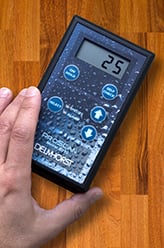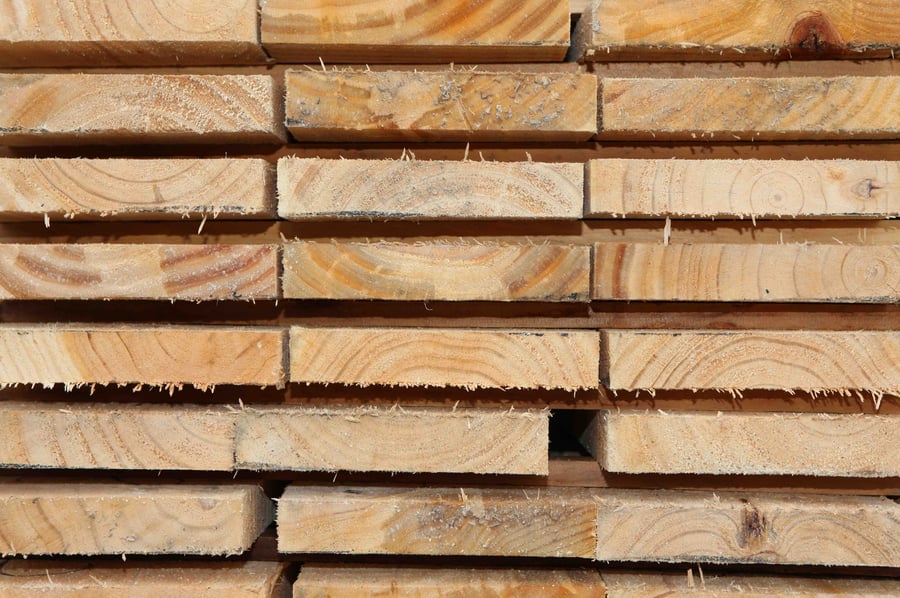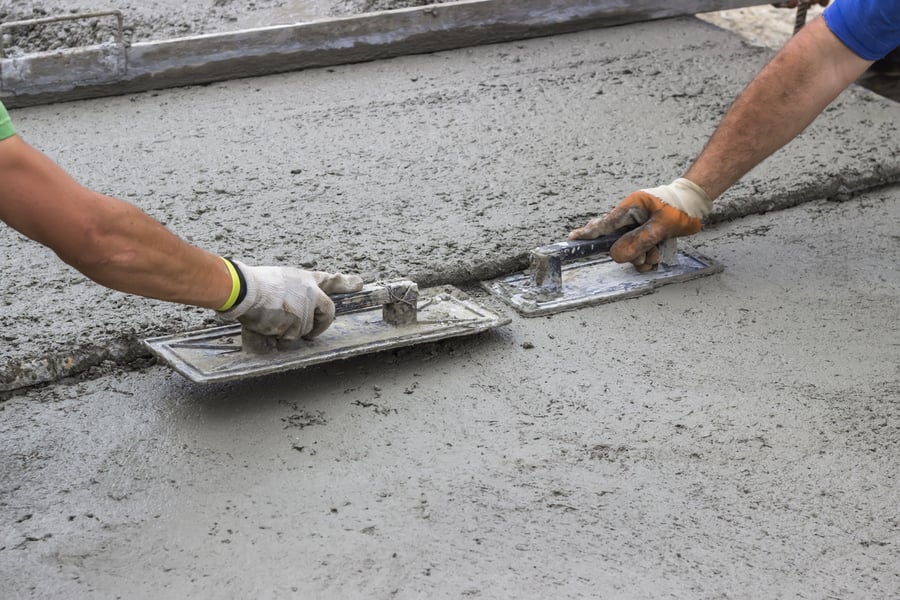Making Moisture Reading Corrections for Exotic Wood Species

Moisture meters are a very convenient tool for determining the %MC of wood for a variety of purposes. With a moisture meter, the task of analyzing a sample of wood materials is quick and easy, whether you’re using pin or pinless moisture meters.
However, not every species of wood is the same. Different species of wood will return different moisture reading results, even when both materials actually have the same %MC! Because of this, it is important to be able to make species corrections for each of the unique species of wood that you are testing.
Why Does Species of Wood Matter?
What causes the different species of wood to affect moisture meter readings differently? The answer to this depends on the type of meter being used. Remember, pin-type meters use electrical resistance to test for moisture content, and pinless meters rely on using electromagnetic radio waves to scan a material.
With pin meters, the reason wood species matters is that two different species of wood might have different inherent resistance values to electrical current. For example, say that you’re testing a sample of Douglas fir and a sample of cherry wood. If the meter is calibrated for the Douglas fir’s electrical resistance, then you can rely on those readings.
However, cherry wood is somewhat more ductile than Douglas fir, so the same meter’s readings of a sample of cherry wood would indicate more moisture than is actually present in the material.
For pinless meters, the determining factor in making species corrections is actually the specific gravity, or SG (a measurement of the density of an object compared to the density of water), of the wood material being sampled. As the SG of a material decreases, so does the indicated moisture content. As the SG of a material increases, the indicated level of moisture rises as well.
Here’s an example: if a moisture meter is calibrated to measure moisture in wood species that have a specific gravity of 0.46, a sample of wood that has 0.30 SG that reads as having 10% moisture content actually has around 14.4% MC, whereas a sample of wood with 0.80 SG that reads as having 10% MC actually has less than 5% MC.
How to Make Species Corrections
 So, now that we know why the species of wood being measured matters when determining %MC, how do we make corrections for wood species. The two most common methods are to either:
So, now that we know why the species of wood being measured matters when determining %MC, how do we make corrections for wood species. The two most common methods are to either:
-
Use a Species Correction Chart
OR
-
Use Built-in Species Corrections
The first method has you consulting a chart. For pin meters, this chart lists the most common species of wood that the manufacturer’s meters are used to test. For pinless meters, this chart lists conversions for moisture meter readings for the different specific gravities that the meter can reliably test.
To use the chart, simply take a reading of the wood material to be tested, look up the meter reading on the chart (rounded to the nearest number), and go through the list of wood species or specific gravities until you find the result for the specific wood you’re testing.
The major limitation of using a species correction chart is that your final reading result will be a bit of an estimation, as readings are not necessarily going to fall neatly on a whole number on the chart.
With built-in species corrections, all you have to do to get an accurate reading of the wood sample you’re testing is to program the meter for the species of wood being tested. The exact method for doing this may vary from one manufacturer to the next. For example, Delmhorst’s ProScan pinless moisture meter can be set for different species of wood by pressing the select key to enter “species mode,” then using the up and down keys on the meter to switch the SG setting.
Once the meter has been set to the correct wood species, it will automatically adjust its reading results to reflect the correct value for that species of wood. The major limitation with this is the number of wood species the manufacturer can program the meter to correct for in pin meters, or the range of specific gravities that the meter can reliably read for pinless meters, as well as knowing the SG of the wood being tested in the first place.
Testing Exotic Species
What of exotic plant species? Ones not found on the chart or in the list of plant species that your meter can correct for?
Here, testing moisture can be a little trickier. You could either use your meter’s reference scale mode (assuming it has one) to get a qualitative assessment of the moisture content of wood, or you could try to contact your manufacturer directly to find out if there’s a way to get a quantitative value of that wood species’ %MC.
In the past, Delmhorst has answered the question of how to correct for different exotic wood materials many times. If you can’t find the right species correction for your Delmhorst moisture meter on our species correction chart, we may be able to provide you species correction info pertaining to your exotic wood species.
For example, When David Lucas, one of Delmhorst’s customers, asked about how to get a correction for a species of wood that wasn’t yet on the species correction chart, we were able to answer his question: “if the botanical name is Melanoxylon, use Douglas fir. If botanical name is Auriculiformis, use black walnut.” If Delmhorst doesn’t have an exact answer, rest assured the support team will do their best to find one for you!
Find out how Delmhorst goes the extra mile for customers in the free “More than a Manufacturer” eBook at the link below.
Subscribe to Our Blog
Post Related

How to Use the Best Moisture Meter for Your In-Kiln Monitoring System


